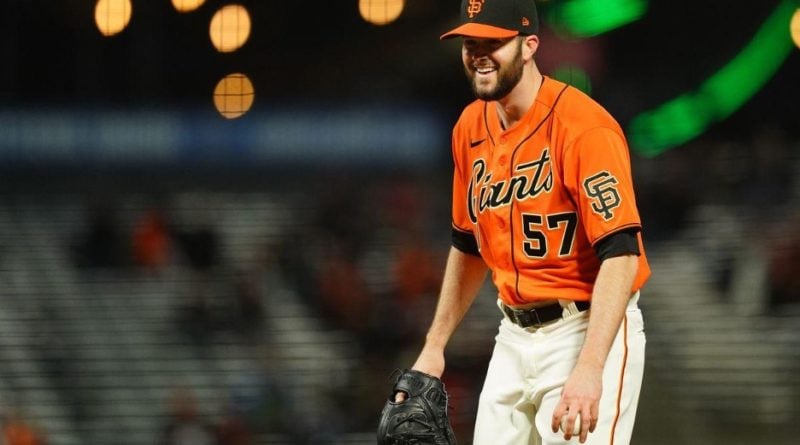SF Giants CEO Larry Baer Credits Team Culture for Their Best Record
When SF Giants CEO Larry Baer commented recently, “I think there’s something pretty deep-seated in being part of a winning culture,” it was almost as though he were describing a secret ingredient in a recipe. In this case, the recipe is for the greatest record in Major League Baseball—currently held by the Giants at 80-44.
Larry Baer, who joined the Giants in 1992, went on to point out: “I think there is a really strong ethos to having been in a winning culture and knowing what it takes to get through a long season and a winning environment.” Apparently, at Oracle Park, what it takes to get through a long and challenging season in the midst of a global pandemic while managing to achieve a historic MLB record is something as simple as chemistry.
“I think this is probably the best clubhouse I’ve been a part of in terms of everybody getting along, everybody being unselfish—and I’ve been a part of some really good clubhouses before,” emphasized Giants first baseman Brandon Belt, who was around for two Giants championships. “This kind of chemistry we have is really hard to find, at this level, in this day and age.”
Giants baseball in 2021 is all about chemistry: a collaborative spirit and a deep-seated respect and trust among all players. Bench players are crucial to the team’s success. Players hug when replacing one another in games. When a player is removed, he thanks manager Gabe Kapler and embraces the break as an effort to remain fresh and productive throughout the season.
The proof that this kind of camaraderie is in fact a powerful secret ingredient is in the pudding—the Giants’ record speaks for itself.
The team is known for its hugging culture and even has a special hug named after pitcher Buster Posey, one of three veterans exemplifying the team’s commitment to unity and respect. Posey, shortstop Brandon Crawford, and first baseman Brandon Belt—each in the final year of their contract—have been supporting each other on the field throughout 13 seasons. Posey and Crawford were both drafted in 2008 and signed one day apart. Posey was a major force in all three of the Giants’ World Series wins, while Crawford and Belt played in the last two.
“Everybody all the way from the top on down has played a role in bringing in the right guys,” Belt commented. “When they sign guys, they definitely do research on how the guy is as a person. They really have brought in the right guys.”
This season’s cohesiveness is especially remarkable given that Gabe Kapler and the Giants’ coaching staff is only in its second season and working with the league’s oldest group of position players, which has the potential to bring up some issues. But Posey and Crawford, along with other key veterans, immediately accepted and embraced Kapler, which led the way for an attitude of full cooperation on the part of the entire roster.
According to Joan Ryan, a Giants consultant and author of the 2020 book Intangibles: Unlocking the Science and Soul of Team Chemistry: “One of the things that really strikes me is Gabe’s staff has clearly developed incredible trust with these players, and I’m still not sure how they did it so quickly. But those players bought into this approach, this selflessness. And I say selflessness meaning that they trust that the coaches’ decisions are driven by one thing: How do we win games? It’s not political, it’s not, ‘I like this guy and not that guy,’ or ‘I’m obligated to play this player.’ They got the players to totally commit.”
While the Giants lead the MLB with 187 homers, it’s not just one or two key players pushing those numbers up. The team actually has 10 players who have homer totals in the double-digits, but no one has hit 20 yet. They’re also not afraid to walk when needed. In fact, the Giants are tied for second place in the National League with 458 walks. And while they don’t turn out a lot of runs consistently, they’re in fifth place in sacrifice bunts with 28.
“I sense that our players have a really good feel for the strategy of the games, and they are very comfortable passing the baton to one of their teammates,” confirmed Gabe Kapler. “Even though baseball can feel like an individual sport, this group feels like they’re kind of running a relay race. Our players are genuinely and authentically happy for each other when they perform well. It doesn’t feel like one guy’s climbing and another one is grabbing his shirt and trying to pull them down. What that creates is an atmosphere where people feel confident and supported.”
“There’s always this chicken-and-egg question with winning and chemistry: What comes first?” posed Farhan Zaidi, head of Baseball Operations for the Giants. “I don’t know that we have an answer, but it does feel like they sort of perpetuate or reinforce one another. When you’re playing well and there’s more selfless play, winning comes to the forefront. And more winning creates even more positive chemistry, and so on. It can go the other direction, too, whatever the catalyst.”
“I used to feel like the winning led to the chemistry,” argues Kapler. “But I don’t feel that way anymore. I’ve been on some playoff teams that had the chemistry from spring training on, and I would say this group has that since spring training—there were smiles and togetherness that preceded the winning. I feel like our clubhouse is full of good human beings; full of people who care for each other.”
And that one special ingredient—that feel-good vibe that the team upholds and represents—might well be the Giants’ secret to success.
Keep up with the team by following the SF Giants on Twitter and Giants CEO Larry Baer on Facebook.




